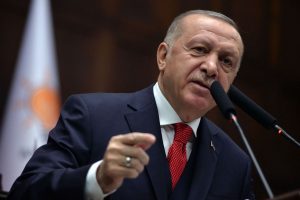The recent appointment of Sanjay Malhotra as Governor of the Reserve Bank of India (RBI), replacing Shaktikanta Das, signals a pivotal shift in India’s monetary policy dynamics. Mr Das, widely respected for his steady leadership during crises like the Covid-19 pandemic and global geopolitical shocks, steps down at a time when India faces mounting economic challenges. His departure reflects the government’s growing urgency to align the RBI’s policies more closely with its immediate growth priorities.
During his six-year tenure, Mr Das upheld the RBI’s mandate of balancing inflation control with systemic stability. Despite mounting pressure from industrial lobbies and sections of the government, he resisted aggressive rate cuts, prioritising long-term economic health over short term growth fixes. While this approach stabilised India’s financial system, it also drew criticism for being inadequate in reviving growth, particularly as GDP slipped to a seven quarter low of 5.4 per cent in the September quarter. The slowdown, marked by weak manufacturing and strained consumption, created a pressing demand for more growth centric policies ~ something the government now expects from Mr Malhotra. His appointment signals a possible recalibration of priorities.
Advertisement
Known for his close working relationship with Finance Minister Nirmala Sitharaman, Mr Malhotra’s elevation hints at the government’s intent to exert greater influence over the RBI’s policy framework. While this could lead to more coordinated fiscal and monetary measures, it raises concerns about the erosion of the central bank’s institutional autonomy. Central banks must operate independently to safeguard long-term economic stability, even if their policies conflict with the short-term goals of the political leadership. The government’s decision to replace the governor also reflects a growing trend of central banks globally facing heightened scrutiny and influence from political leadership. This development underscores the delicate interplay between policy independence and the need for economic coordination, especially in a volatile global economic environment.
At the core of this shift is the gov ernment’s dilemma: India’s economic slowdown demands decisive action, but the available tools carry significant risks. Interest rate cuts, for instance, could spur consumption and investment but might fuel inflation, further burdening households. Similarly, loosening lending norms could stimulate short-term growth but at the cost of long-term financial discipline. Mr Das’s caution in these areas, including his push for reforms like stricter bad loan reporting and higher risk weights for unsecured loans, prioritised stability. However, such measures often conflicted with the government’s focus on immediate growth optics.
As the new Governor, Mr Malhotra faces a formidable challenge. He must address India’s sluggish growth while maintaining the financial prudence that Mr Das championed. Striking this balance is essential to ensure that shortterm gains do not come at the expense of long-term stability. While the government’s push for growth is understandable, preserving the autonomy and credibility of the RBI remains crucial for the sustainability of India’s economic progress.
















